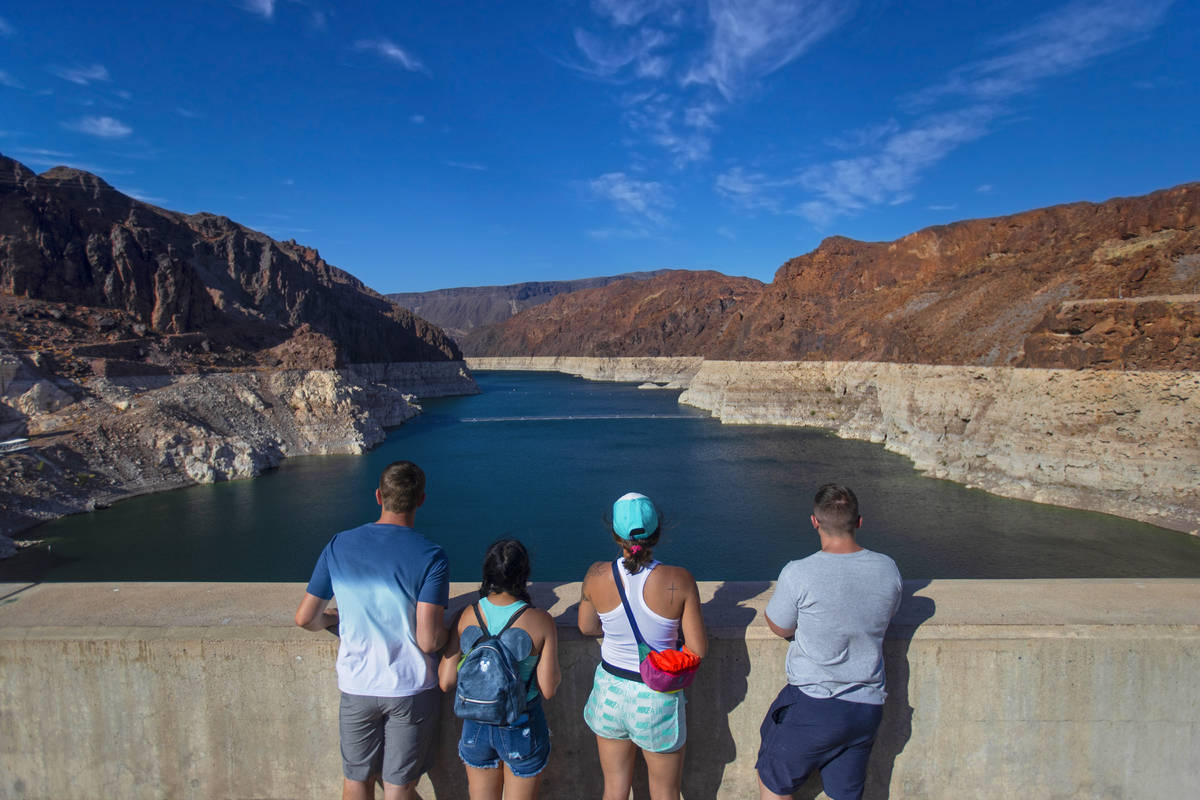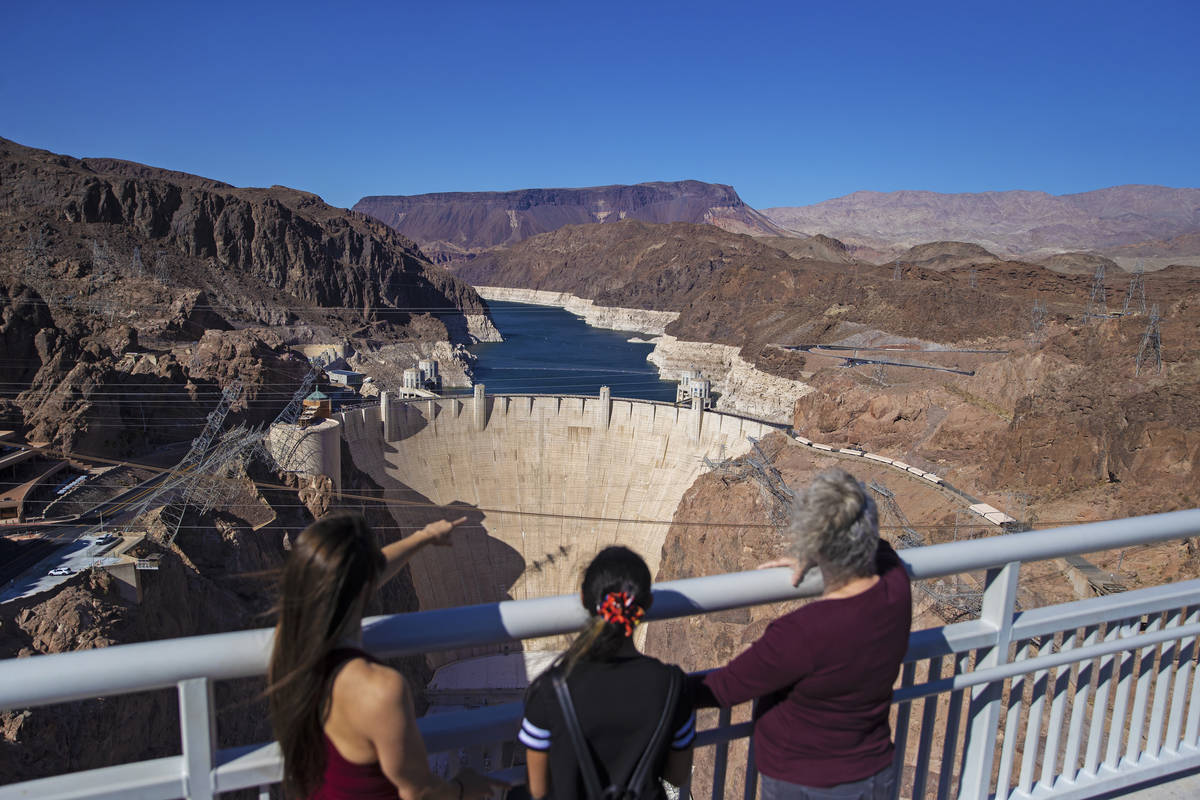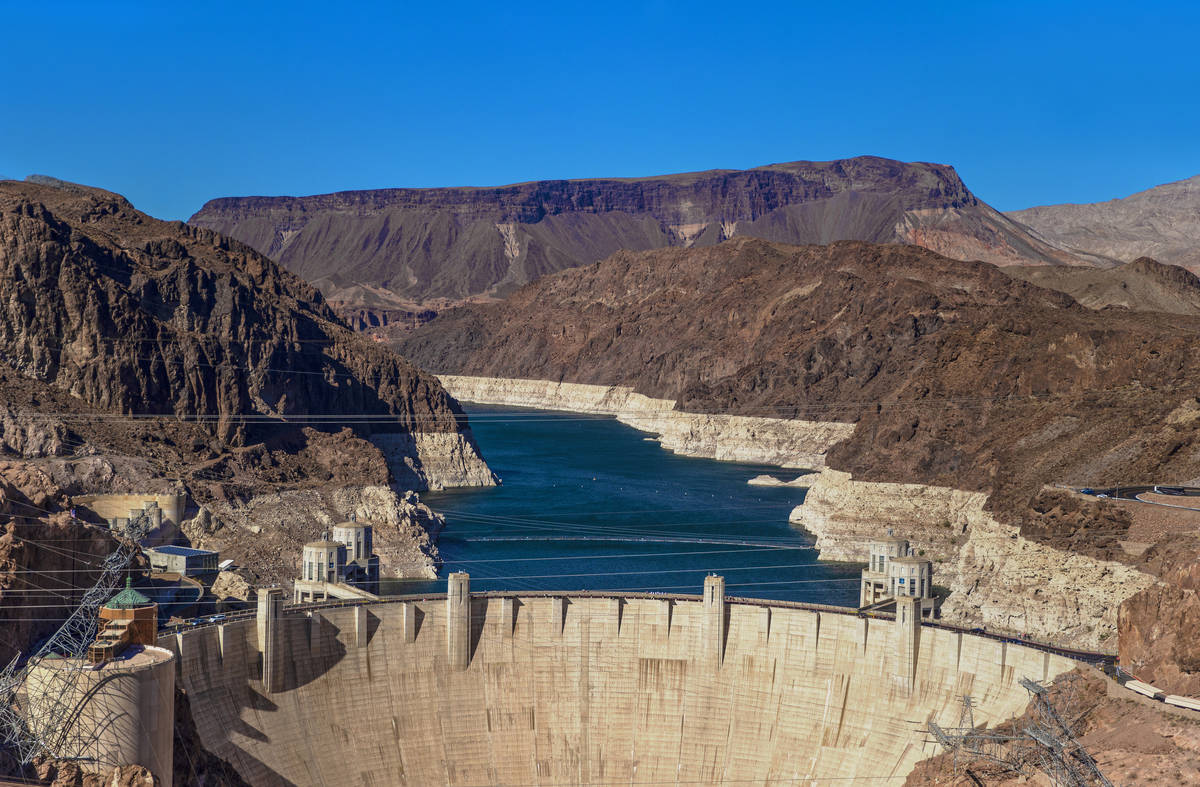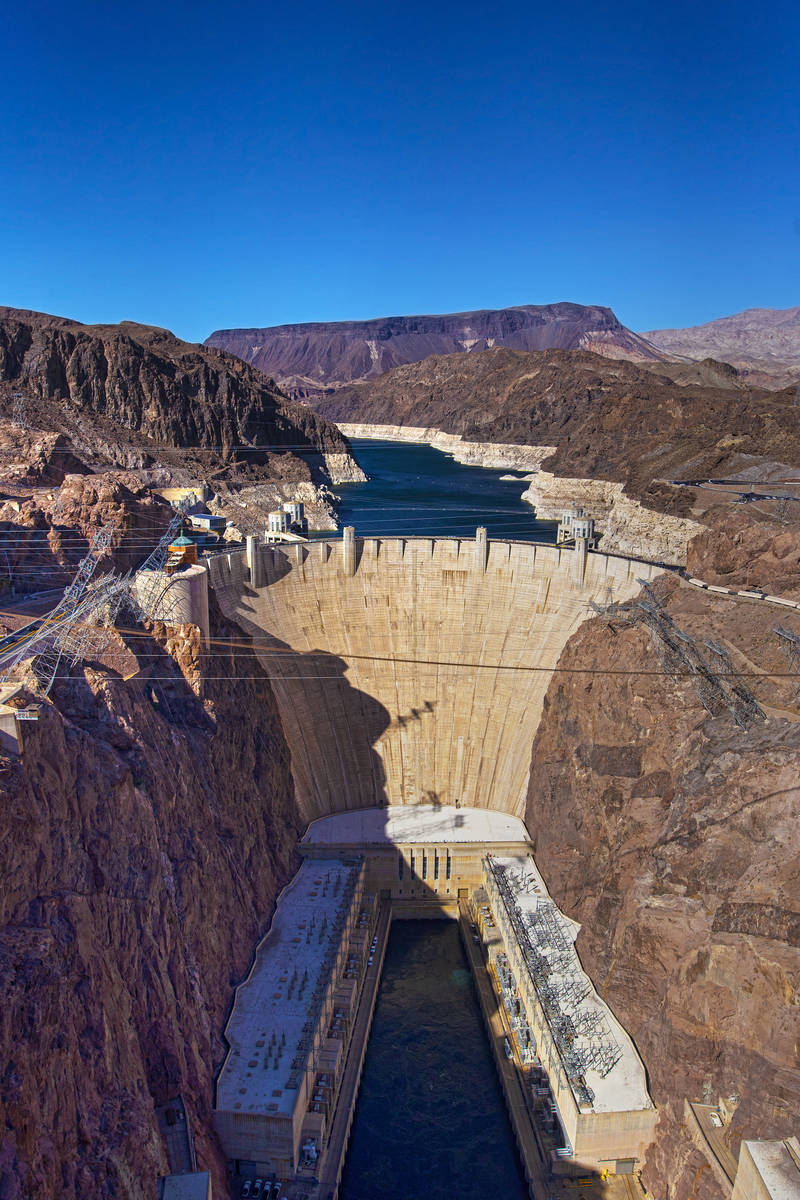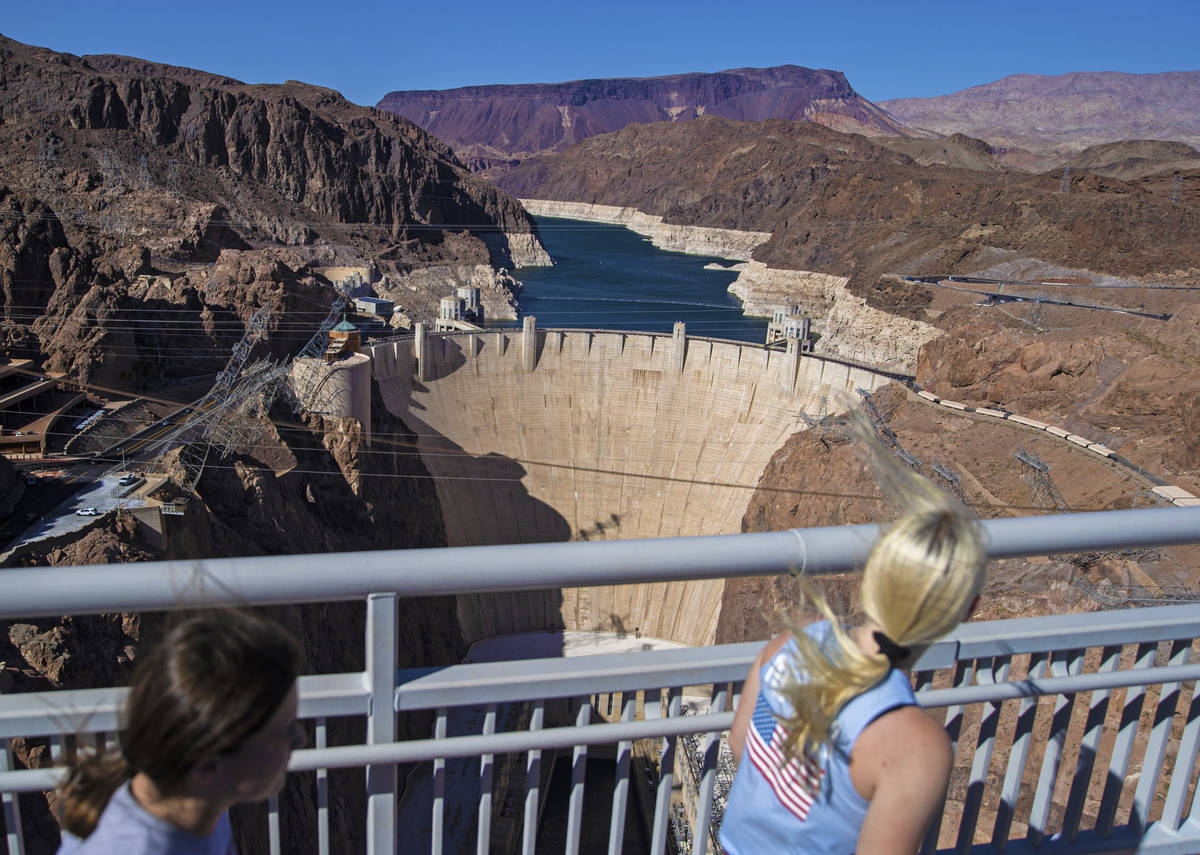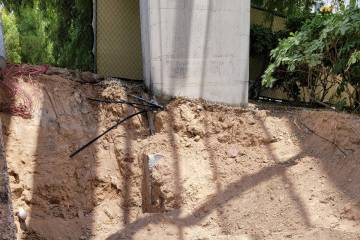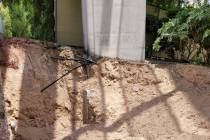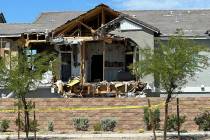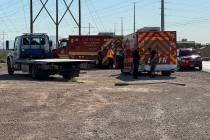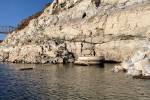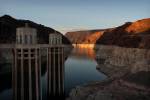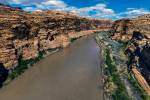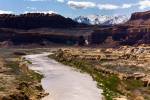Lake Mead water level dips to record low
Lake Mead’s water level reached a historic low late Wednesday, according to federal officials.
U.S. Bureau of Reclamation data shows the lake dipped below the previous record to reach 1,071.56 feet about 11 p.m. The lowest the lake level reached Thursday morning was 1,071.48 feet about 6 a.m.
The record comes as Lake Mead is nearing its first federally declared water shortage, a result of a two-decade drought that has strained the Colorado River. Water from the river serves 40 million people in seven states and Mexico.
“This is something that has been anticipated for a while, with respect to climate change and the impacts it would have on our water supply in the long term,” said Kristen Averyt, a UNLV research professor specializing in climate resilience and urban sustainability.
Averyt, who also serves as Nevada’s climate policy coordinator, said the state should be prepared for more extreme conditions moving forward, but she remains optimistic about the future.
“We are resilient,” she said. “We’re a pretty tough state, and I think we’re going to be able to figure out a path forward.”
Further decline projected
Lake Mead’s previous low point of 1,071.61 was logged on July 1, 2016, Bureau of Reclamation spokeswoman Patti Aaron said this week. The bureau had projected the lake would match that level Thursday.
As of Monday, the country’s largest reservoir was just 36 percent full. The lake is the source of about 90 percent of Southern Nevada’s water.
Aaron said the water level is expected to continue declining until November.
Runoff from snowpack in the Rocky Mountains is essentially over already, Aaron has said. Typically, the runoff season lasts from April to July, she said.
A shortage declaration will be made in August if Bureau of Reclamation water level projections at that time show the water level below 1,075 feet at the beginning of next year.
Such a declaration would slash Nevada’s allocation of 300,000 acre-feet of Colorado River water by 13,000. One acre-foot of water is about what two homes in the Las Vegas Valley use over the course of 16 months.
A cut from a shortage declaration would be in addition to an 8,000 acre-foot contribution Nevada agreed to in 2019 if the lake level were to drop below 1,090 feet, as it has.
The path forward
Southern Nevada won’t immediately feel the cut because of years of conservation efforts, water officials have said.
The Southern Nevada Water Authority has said the region already uses less water annually than what the allotment would be with a cut factored in. The agency has said it has more than 2 million acre-feet of water stored in Arizona, California, Lake Mead and Las Vegas’ local aquifer.
But officials at the water authority have continued to urge the public to keep up with conservation efforts, such as adhering to a seasonal watering schedule and using a rebate program to convert grass yards to desert landscaping.
Curbing outdoor water use is the best thing the community can do to respond to the drought and declining lake levels, agency spokeswoman Beth Moore said.
Last week, Gov. Steve Sisolak signed legislation that will require nearly a third of all of Southern Nevada’s grass to be removed by the end of 2026. The water authority estimates the measure will save about 10 percent of the area’s allocation of water from the river, about 30,000 acre-feet.
The law prohibits Colorado River water distributed by the water authority from being used on “nonfunctional turf” starting in 2027. This includes grass between roads and sidewalks, in medians and traffic circles and decorative grass outside businesses, housing developments and similar areas. Single-family homes, golf courses and parks are exempt.
Kyle Roerink, executive director of the Great Basin Water Network, agrees with the water authority on the importance of conservation.
“I think the caveat is, how is Las Vegas going to choose to grow in the coming years?” he said. “That poses some really hard questions.”
Roerink wants to see a moratorium on any new diversion projects along the river and a prohibition on growth outside the Las Vegas Valley.
“I think there is this dichotomy where Southern Nevada is leading on water conservation across the West,” he said. “There’s no doubt. But at the same time, we’re going to be plowing ahead with outdated economic models that aren’t going to suit our 21st-century needs.”
Contact Blake Apgar at bapgar@reviewjournal.com or 702-387-5298. Follow @blakeapgar on Twitter.



